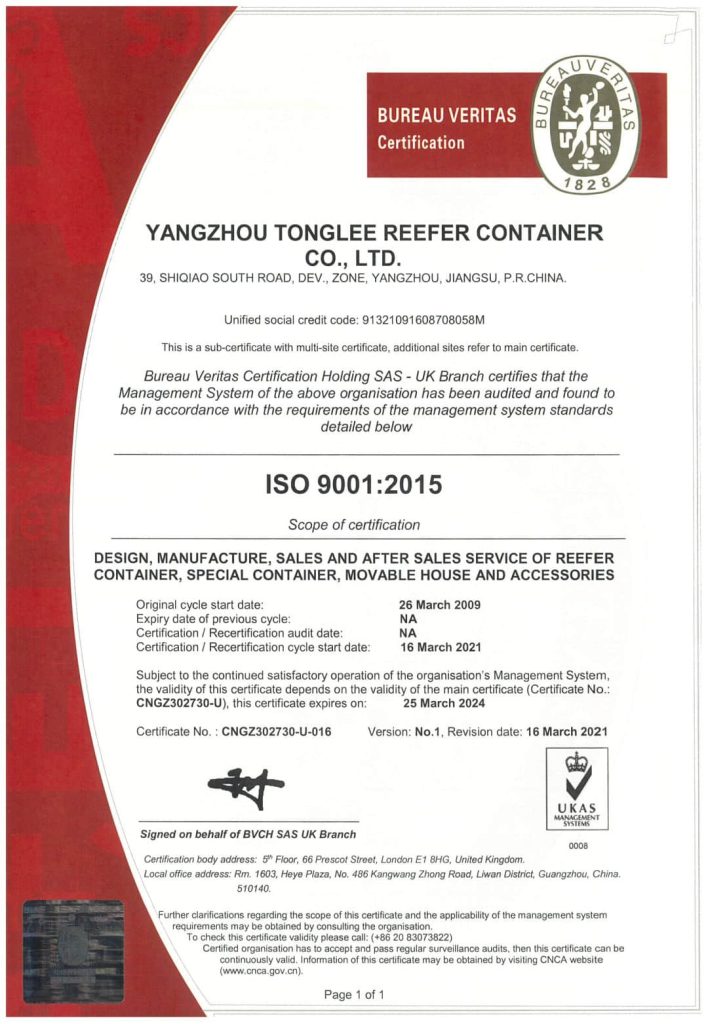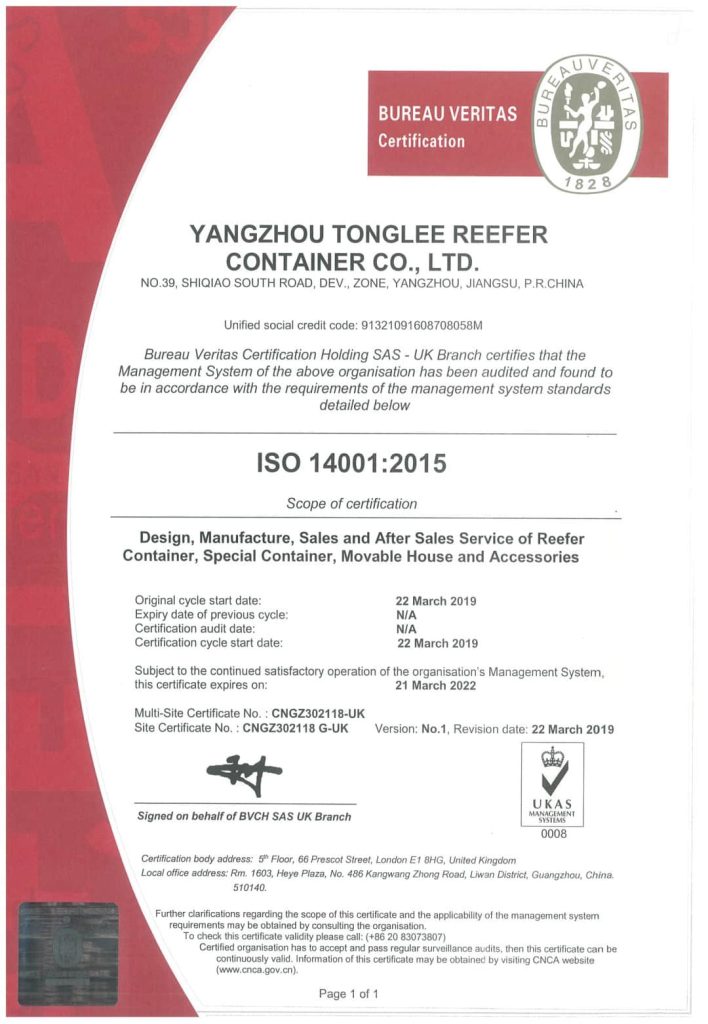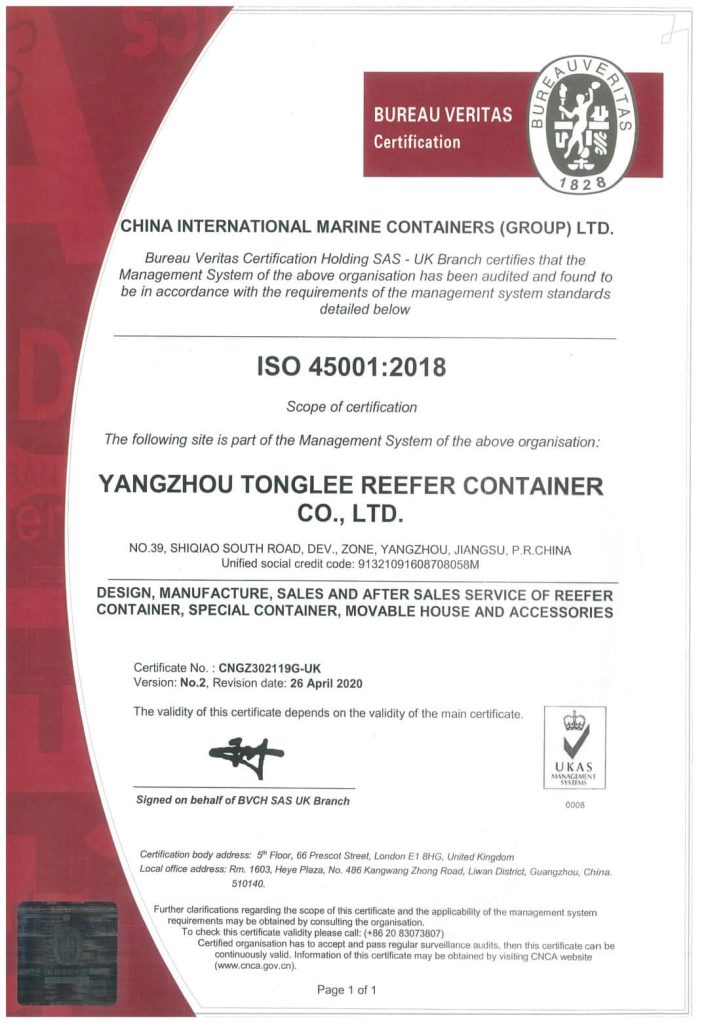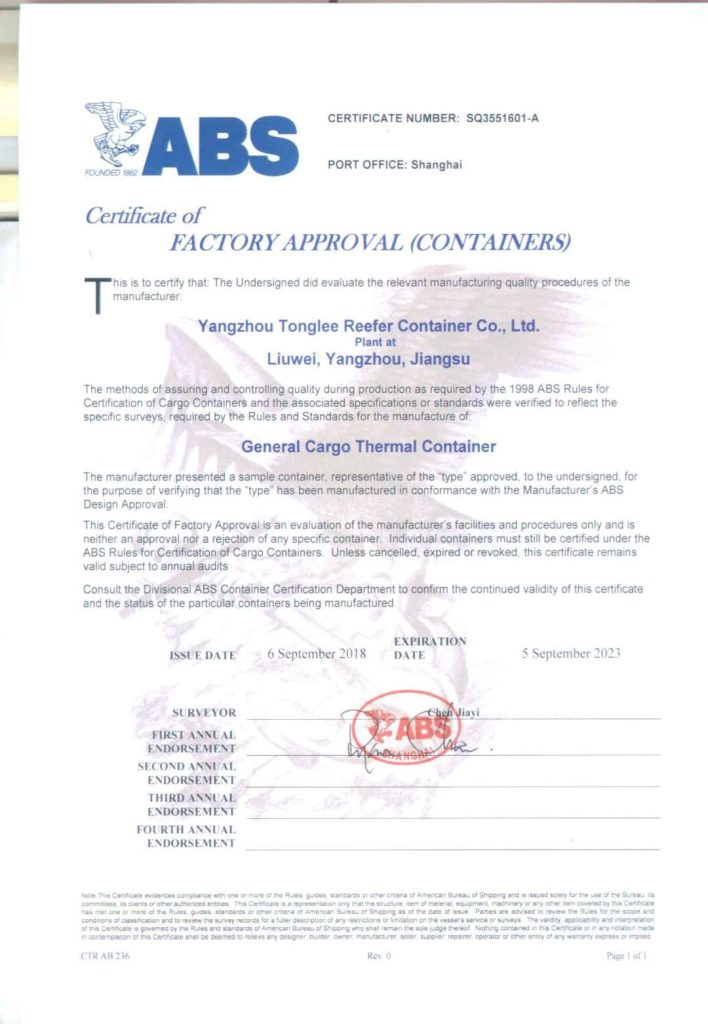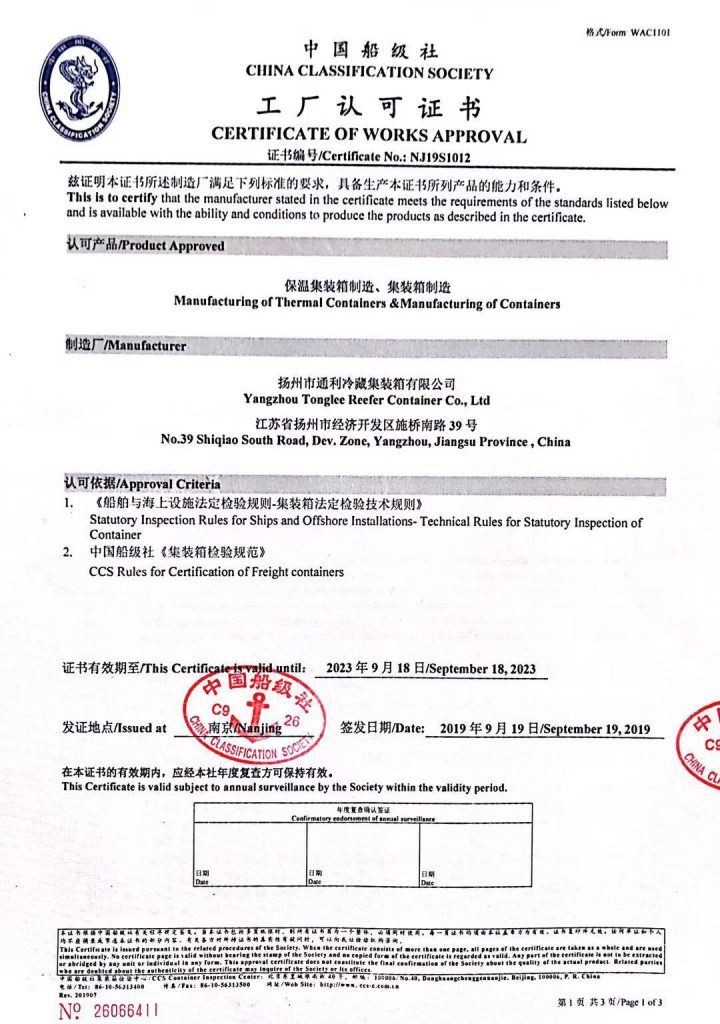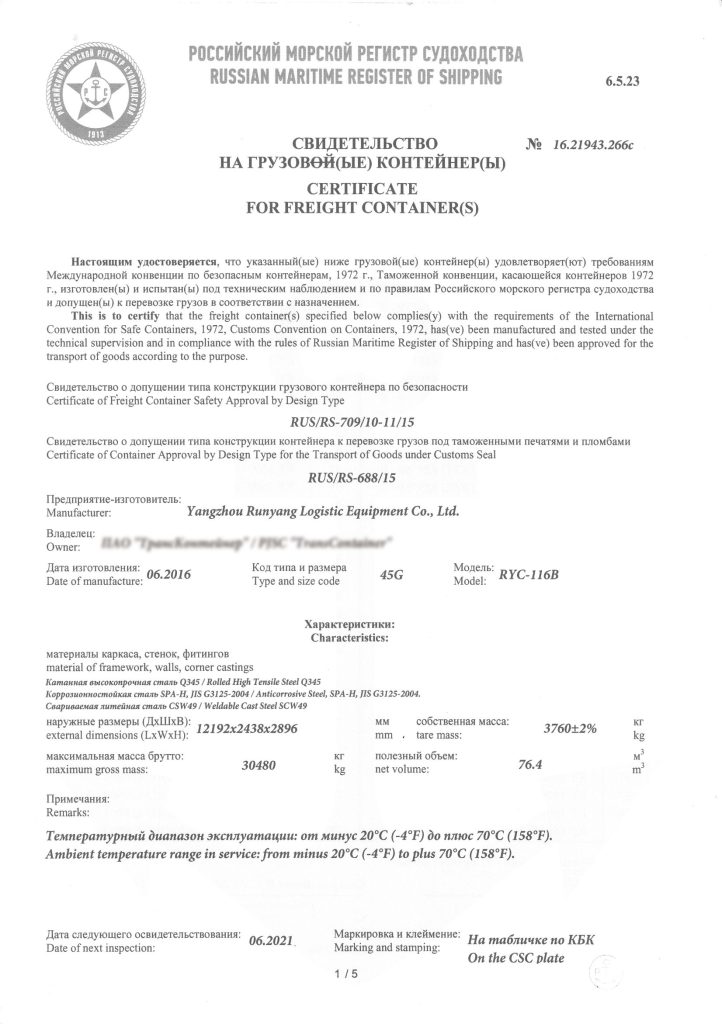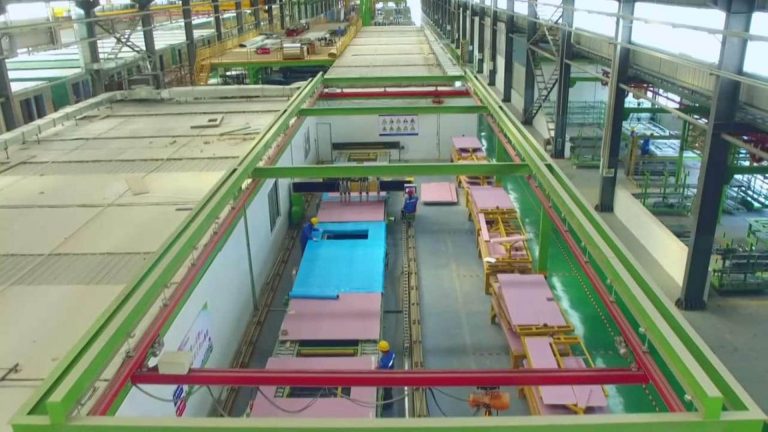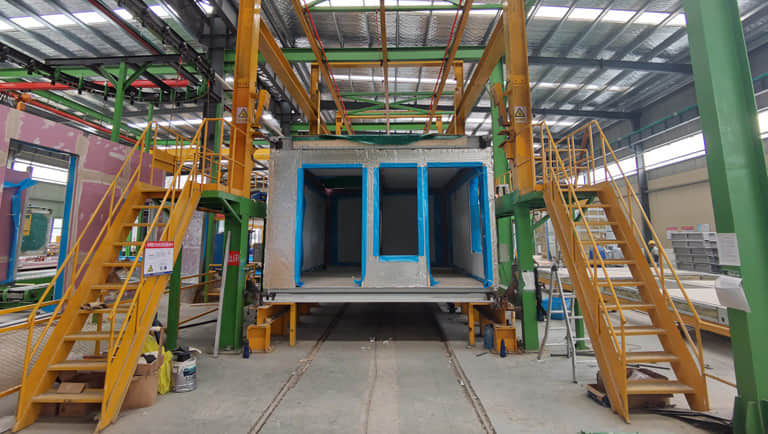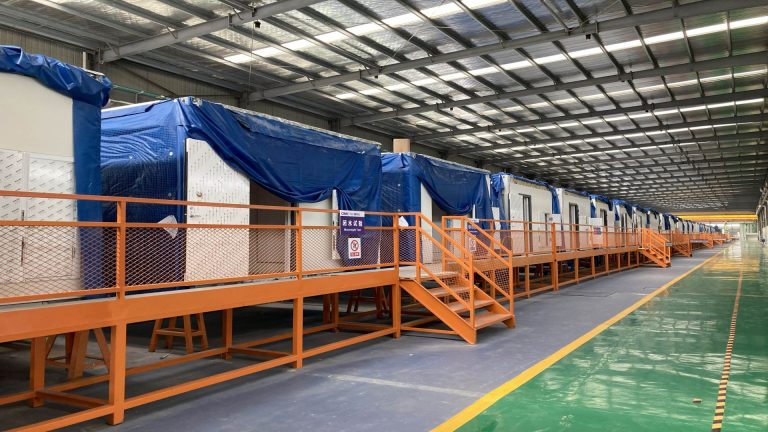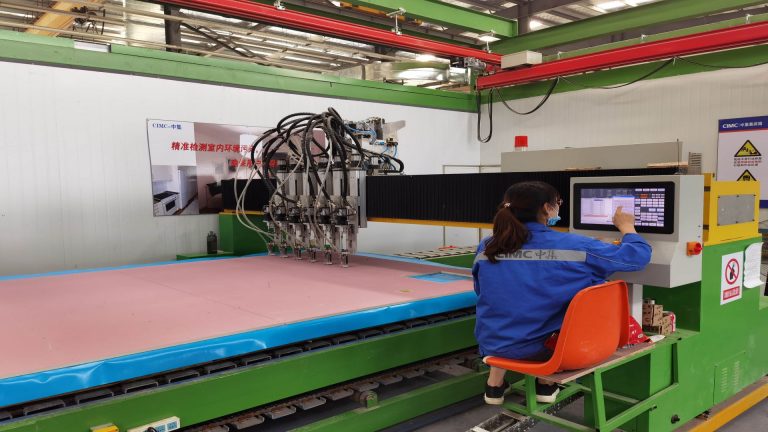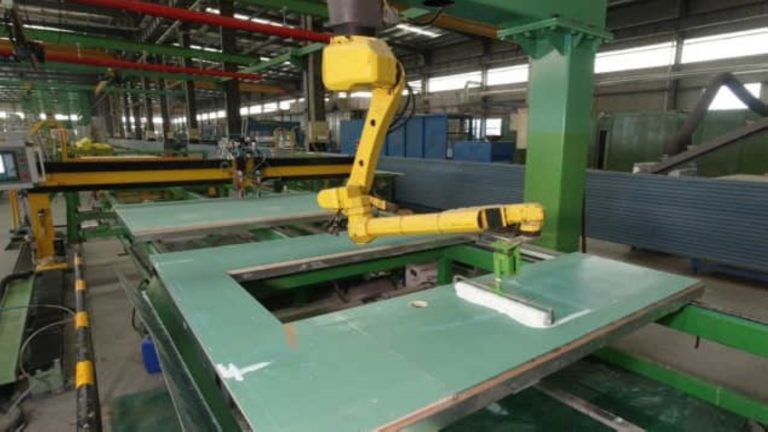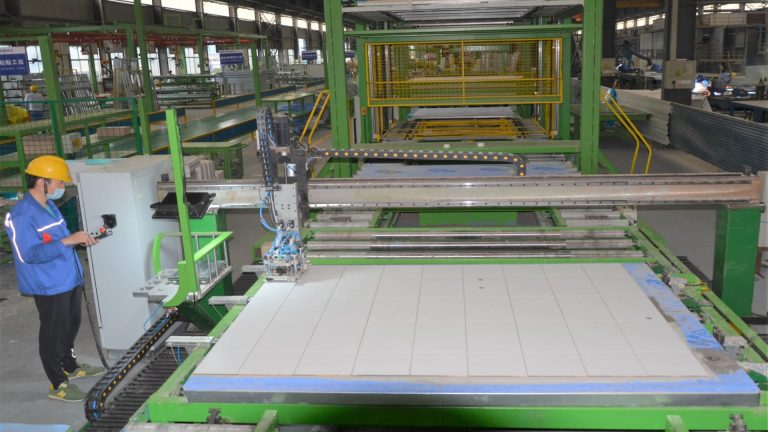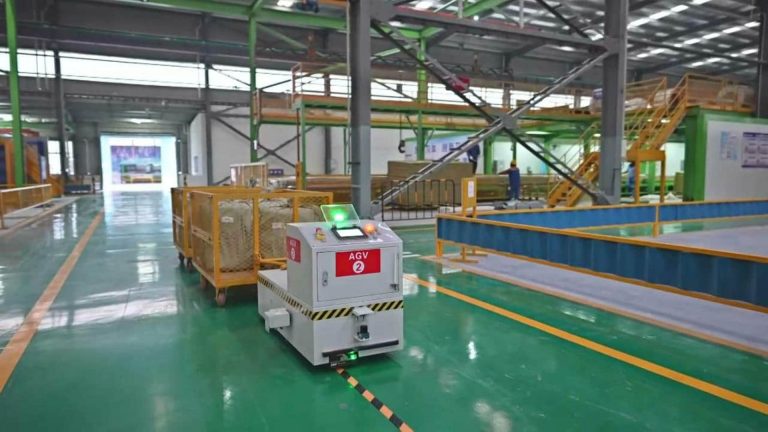The accommodation containers are to make decoration in a special container shell which has openings for windows and doors.
Refined insulation sandwich panels will be installed inside of the steel shell, internal electrical cables and plumbing pipes are invisibly mounted behind the decoration panels.
Door, Windows, and flooring can be customized selected according to different regions and requirements.
Accommodation Container Applicable Scene
For temporary or half-permanent people living at construction sites, mining sites, disaster relief.
Features of Accommodation Container
- Mobility: Accommodation Container is removable and can be used again.
- Quick set-up: short manufacturing period and low foundation requirement.
- Safety: steel frame structure, windproof and shockproof.
- Rugged and durable: The Accommodation Container is made of steel, with strong shock resistance, deformation resistance, water resistance, and corrosion resistance, the service life is more than 15 years.
- Sound insulation and heat insulation: Accommodation Container adopts an air-cutting design and is equipped with high-performance insulation material, which has good sound insulation and heat insulation.
- Aesthetics: The Accommodation Container can be designed in various shapes, with multiple designs on the outer wall, bright and beautiful appearance.
- Environmental protection and energy saving: Accommodation Container is ready to use, using suspended cranes, no working waste is generated, and recycling is more energy-efficient.
- Sensitive combination: Accommodation Containers such as meeting rooms, dormitories, kitchens, and bathrooms can be combined at will, and the speed is very fast.
- Convenient disassembly and assembly: The Accommodation Container can be transported to the destination and check-in on the same day.
Frequently Asked Questions about Accommodation Container
1.How to deal with the insulation problem of accommodation containers in a high-temperature climate?
The most popular Accommodation Container insulation material is rock wool. The rock wool products are made of high-quality basalt and dolomite as the primary raw materials. After being melted at a high temperature above 1450 ℃, the world’s advanced four-axis centrifuge is used for high-speed centrifugation to form fibers, and at the same time a certain amount of injection After measuring the binder, dustproof oil, and water-repellent agent, they are collected by a cotton collecting machine, passed through the pendulum method, plus the three-dimensional method of spreading the cotton, then solidified and cut to form the heat insulation layer. So don’t worry about the insulation layer.
2.Does a container house need to be used as a foundation?
Accommodation Container can choose a natural foundation.
When the bearing capacity of the foundation soil of the ground-floor house is less than 60kPa or the bearing capacity of the multi-story house structure is less than 100kPa, and the foundation soil is soft soil or poor foundation, the foundation treatment should be carried out.
3.How to install the doors and windows of the Accommodation Container?
Doors and windows can be installed according to personal preference, and glass doors and wooden doors can be customized.
The windows can also be customized as round windows, shutters, floor-to-ceiling windows, etc.
4.In what scope can the Accommodation Container be used?
Fieldwork or engineering construction place: Accommodation Container can be used as workers’ dormitory, restaurant, warehouse, temporary toilet, etc.;
Factories and other enterprises and institutions: Accommodation Container can be used as classrooms, dormitories, canteens, etc.;
Earthquake relief resettlement housing: Accommodation Container can be used as a temporary shelter for epidemic isolation;
Large-scale public events: Accommodation containers can be used as exhibition halls for exhibitions and events.
CIMC TLC|RYC 20′ Accommodation Container Introduction
- コンテナ化されたデザインは、複合輸送に適している。
- 高い構造強度、完全な機能を備えた内部衛生設備
- Ergonomic sanitary and furniture design to make full and efficient use of space
- 20’Accommodation Container can be customized according to customer requirements, flexible layout, and high utilization rate


CIMC TLC|RYC Accommodation Container Service Details
| プリセールスサービス | 技術・商業コンサルタント カスタマイズされたデザインとエンジニアリング |
| 返品ポリシー/アフターサービス | 構造体1年保証 塗装に3年 デカール5年 |
| リードタイム | 70 days after order confirmation |
| 輸送方法 | 海、鉄道、道路 |
| 貨物輸送期間 | 特定の目的地に応じて確認 |
| MOQ | 1ユニット |
20′ Accommodation Container Data Sheet
| 基本機能 | |||
| ● External size: L6058mm*W2438mm*H2591mm ● Internal size: L (4033+1150) mm*W2188mm*H2204mm | |||
| 風袋重量: | |||
| ● 3040KG | |||
| コーナーポスト | |||
| T6.0mm SPA-H | |||
| サイドウォール | |||
| すべてのアウターサイド/エンドパネル:t1.6mm SPA-H ● Topside rail: t3.0*60*80mm Q235B ● End rail: t4.0mm SPA-H ● Inner covering & Partition wall: 75mm sandwich plate (t0.5mmPPZ +mineral wool + t0.5mmPPG-white.) | |||
| 屋根だ: | |||
| ● Outer panel: t2.0 mm SPA-H ● Inner covering: 75mm sandwich plate (t0.5mmPPZ + mineral wool + t0.5mmPPG-white.) ● Frame: t3.0mm SPA-H | |||
| フロア | |||
| ● Bottom side rail: t4.5*50*160*30mm SPA-H ● Cross-member: t4.0mm SPA-H ● Floor Plate: t20mm plywood + t2.0mm PVC | |||
| ドア | |||
| ● exterior doors: steel door and frame, door frame inner size:850 mm x2040mm ● Insulation: mineral wool | |||
| ウィンドウズ | |||
| ● PVC-U sliding type window, frame size 900*900mm, white color, double glass. ● PVC-U vertical sliding window, frame size 800*1100mm, white color, double glass. | |||
| Allocation: | |||
| ● Cabinet 1200*600*900mm ● Integral shower room BUL1020AR-SM | |||
| 電気系統: | |||
| ● All electrical components and wiring shall be certified by CE norm. | |||
| 保存: | |||
| ● The outside frame’s color: subject to the client`s requirement | |||
| 保証 | |||
| ● Construction: one year guarantee ● Paint System: three years guarantee |
20′ Accommodation Container Flysheet
CIMC TLC|RYC 40′ Accommodation Container Introduction
- コンテナ化されたデザインは、複合輸送に適している。
- 高い構造強度、完全な機能を備えた内部衛生設備
- Ergonomic sanitary and furniture design to make full and efficient use of space
- 40′ Accommodation Container can be customized according to customer requirements, flexible layout, and high utilization rate
40‘ Accommodation Container Data Sheet
| 基本機能 | |||
| ● External size: L12192mm*W2438mm*H2591mm ● Internal size: L(2×1200+3×3086) mm*W2202mm*H2247mm | |||
| 風袋重量: | |||
| ● 4900KG | |||
| コーナーポスト | |||
| T6.0mm SPA-H | |||
| サイドウォール | |||
| すべてのアウターサイド/エンドパネル:t1.6mm SPA-H ● Topside rail: t3.0*60*60mm Q235B ● End rail: t4.0mm SPA-H ● Inner covering: 75mm sandwich plate (t0.3mmPPZ + mineral wool + t0.5mmPPG white.) ● Partition wall: 75mm sandwich plate (t0.5mmPPG white + mineral wool + t0.5mmPPG white.) | |||
| 屋根だ: | |||
| ● Outer panel: t1.6 mm SPA-H ● Inner covering: 125mm sandwich plate (t0.3mmPPZ + mineral wool + t0.5mmPPG white.) | |||
| フロア | |||
| ● Bottom side rail: t4.5mm SPA-H ● Cross-member: t4.0mm SPA-H ● Floor Plate: t20mm plywood + t2.0mm PVC flooring | |||
| ドア | |||
| ● exterior door: steel door and frame, door frame inner size:1000 mm x2140mm, Insulation: mineral wool ● interior door for the bathroom: wood sliding door and frame, door frame inner size: 630 mm x2000mm | |||
| ウィンドウズ | |||
| ● PVC-U awing type/upwards type window, frame size 400*300/900*1200mm, white color, double glass. ● Aluminum awing type window for future window type AC unit, frame size 630*400mm, no glass. | |||
| Allocation: | |||
| ● 2 x toilet + 3 x steel washbasin & mirror +2 x shower+3 x double steel bunk with mattress +6 x steel locker+3 x hung table | |||
| 電気系統: | |||
| ● All electrical components and wiring shall be certified by CE norm. | |||
| 保存: | |||
| ● The outside frame’s color: subject to the client`s requirement | |||
| 保証 | |||
| ● Construction: one year guarantee ● Paint System: three years guarantee |
32 tips for building 宿泊用コンテナ
1. Strength and durability
This is very simple. In terms of its initial use in transportation, shipping containers are designed to load heavy objects and stack them up. They can also withstand harsh environments.
2. Low cost
The number of many used containers is far below the number required for the brick-concrete structure. Not only that, but you can also save on building larger and more expensive foundations. Considering that labor expenditures are much less, even buying brand new containers is relatively cheap.
3. Modularity
Containers are the Lego building blocks of the construction industry. Combining containers into larger structures can simplify design, planning, and transportation. This also allows you to have a home where you can grow up with you!
4. Eco-friendly
The average container weighs about 3,500 kg. Used containers can not only be easily recycled but also reduce the demand for bricks and cement.
5. Container house is for the rich
Mistake: Although houses worth millions of dollars were built with containers, the overall idea of container houses was originally intended as an affordable housing solution. Over the years, hundreds of offshore living quarter have been built, including some for less than 200,000 yuan.
6. All container accommodation building container houses are environmentally friendly
Mistake: Unfortunately, one of the top professionals who build housing container houses may not be fully applicable to all these houses. The biggest reason is the use of brand new containers, which are obviously not as environmentally friendly as recycled second-hand containers, but they may still be more environmentally friendly than traditionally built houses.
7. Container houses can withstand hurricanes
Partially correct: After a hurricane or other natural disaster, the container may be blown away by the wind, but keep the container intact. If the containers can be properly anchored to the foundation, they can withstand strong winds.
8. View the actual container
Containers are the foundation of your new home, so make sure what you see (online or otherwise) is exactly what you get. Pay attention to accurate materials and dimensions.
9. There is a trick to increase the height of some ceilings
If you are willing to consider paying extra for each container (usually 1.5 times), you should consider buying a high cube container, which is the same as a normal container but 30cm higher. This extra cost is worth it, especially if you are considering a ceiling.
10. Research the building codes in your area
Different cities (or even different areas of a city) may have different rules and regulations for the construction of shipping container houses. Before starting to build the house, make sure you are familiar with the issues related to approval and are ready to consult with the local planning bureau and other relevant departments.
11. Find the right contractor
Houses have existed for thousands of years, but shipping container houses do not yet exist. Having the right contractors, especially if they are experienced in the kind of house you envision, can avoid detours, reduce construction time, ensure a smooth construction process, and solve any possible problems. You may also want to deal with the project manager of the project to understand the progress of the project, instead of staring at every different internal and external work, but in order to save money, if you are confident, you can supervise the entire project and let the contractor take charge of each Seed tasks, such as welding, piping, thermal insulation, etc.
12. Take time to choose the right insulation material
For container accommodation/houses, the most popular option is spray foam insulation. This is because you want to keep your home insulated and create a moisture barrier to prevent moisture from entering your container house. The only disadvantage of spray foam insulation is that it is more expensive than insulation panels. In the case of a tight budget, you should consider thermal insulation panels. Thermal insulation panels can also provide the same amount of insulation, but you will lose some internal space (approximately 2.54cm per wall).
13. Choose your floor carefully
Do you want to lay carpets or tiles? How about durability? A carpet can be replaced every few years, or a floor that can be used for a long time and is easy to clean. Your contractor can help you make a choice, But the decision must be yours and must be carefully considered.
14. Consider the available options for the pipeline
The look and feel of the entire container house can be re-painted, decorated, and decorated, but the pipeline may only be done once. It is a good idea to understand all the available options and their long-term advantages and disadvantages.
15. Understand the structure of the container
You don’t need to know the details of how physics works, but it’s very important to understand the basic structural integrity. For example, two long walls are both load-bearing and supporting, so if you want to open one Cut another hole in the hole to balance the load-bearing capacity of the wall.
16. Purchase all containers from the same manufacturer
There may be slight differences in the quality and size of shipping containers from different manufacturers, and combining them may eliminate the convenience of using containers to build modular structures. Therefore, it is very necessary to find a container house manufacturer that suits your area and needs, and unified procurement. Once your container is broken, it’s always easy to track down to the manufacturer and get fixed or replace a new one.
17. Simplify the plan
The complexity of constructing an accommodation container house depends on you. Like any type of construction technology, accommodation building container houses offer a wide range of possibilities. If you don’t have much experience or confidence, you can start from the simple, maybe in the future, you can try a more complicated container construction. The advantage of container houses is that they are easy to upgrade, so once you have accumulated the initial experience, you can add additional rooms, floors, and even a swimming pool at any time!
18. Cut as little as possible
Every cut you make on a container requires time and money and will complicate the structure (please consider #15 above). Try to stick to a design that requires the least number of cuts.
19. Finish the design and stick to it
This is a follow-up to the previous tip. Each cutting requires a certain cost, but when you cut a part of the container, it takes a lot of cost and time to rebuild it, which can avoid making new decisions. Visit as many container houses as possible to get inspiration for your design, and then try to find the right supplier to build the one you like.
20. Minimize welding requirements
Welding is expensive and time-consuming, so there must be a construction plan to minimize it.
21. The plans are alway smore than you think
If you want to build a container house on a tight budget, you can at least plan. Give yourself time to calculate your willingness to invest in container house design and various architectural elements to ensure that the budget is not exceeded in the end.
22. Track the cost of every dollar you spent
Keep track of all expenses in accordance with your budget; this will prevent you from overspending at the last minute.
23. New or second-hand containers… the ultimate problem
We know that the cost and environmental protection of houses are directly related to the choice of new and old containers. Buying recycled second-hand containers may be tempting, but it also brings many challenges. You also need to carefully check all the containers you buy and be prepared for defects that may become apparent over time. A good compromise is a “disposable” container, which has only been used once. They are cheaper than brand new but are much less wear and tear than obsolete containers. When you choose the right supplier, you can consult the other party to make the right choice.
24. Rational choice
Make wise choices in order to save money: Don’t be stingy with things that you can’t easily change, such as the container itself. On the other hand, cheap paintwork can be quickly redone at a low cost, but please consider the future cost of one-time savings and indulgence. Good paint is relatively expensive, but it can be guaranteed for more than 10 years. It is more cost-effective. So before making any decision, please make sure that you do not sacrifice security or legal compliance to save money.
25. Choose low maintenance
Another good way to save money is to use building components that require low maintenance. This applies to everything from maintenance fees to cleaning fees.
26. Check the quality of all containers
The bottom container needs to be structured to properly handle the stack. This should be the case for most new containers and disposable containers, but for older containers, it is best to check carefully to ensure reliability.
27. From posts to posts
The containers are designed to be stacked on ships. On the ship, they stacked a container of the same size on top of another and arranged the corner posts on top of the other corner posts. If you look closely, you will find that the prisms are only a little lower than the bottom of the container and higher than the top of the container. The prisms and floor of the container are designed to bear the weight of the container and the container above it. So you want to do the same with your stack container design. If you want to stack 2×20’containers and 1×40’containers, please make sure that the 20’container is at the bottom so that all four prisms of the 40’container can be set up. If the operation is reversed, the 20′ prism will not have proper support, and the 20′ corner post may fall from the top of the 40′. If your design does not allow this, then just build in brackets for the corner posts.
28. Understand how stacking enhances the structure
The design of shipping containers is very sturdy but limited to certain aspects. When they are stacked, their weight is transferred through the corner posts, thereby obtaining high stability. On the contrary, if the container is to be buried in an underground shelter, this situation is not applicable, and the underground shelter will exert a force (soil weight) on the roof and walls of the container.
29. Lock the containers together securely
To ensure that the stacked containers can safely withstand bad weather conditions (or noisy parties inside!) you should lock them together with twist locks.
If you have reached this point, you may seriously consider the transformation of shipping container houses. So far, this idea seems quite reliable. Before concluding this article, let’s start with the point of view of the “devil advocate”. The following points need to be considered:
30. The Devil in Details
The reuse of containers seems to be a low-cost, low-energy alternative to traditional construction methods. However, only in the construction process can people realize that metal boxes become the carrier needed for houses. Depending on the condition of the container and the expectations of the final house, it may be necessary to sandblast the exposed structure, replace the floor, and cut the opening into metal. All these processes, as well as some other processes, require additional parts and generate waste. However, based on the environmental protection of the use of recycled containers, suppliers can be required to transform waste scraps and cut container boards into household or craft ornaments.
31. Correct size and shape
The size of the common container makes the living space limited, the ceiling is less than 2.44 meters (assuming it is insulated). In order to provide a comfortable space for living, working, dining, etc., it is necessary to combine several containers in the correct way.
32. The economic situation of your city
In many areas, containers may be available in large quantities and are inexpensive because it is too expensive to ship them back to the port of origin. However, in some places, it may be cheaper to build a similar house (cabin) from wood, and with the increasing popularity of 3D printing material technology. However, no matter which forms you choose, the prices of containers, light steel structures, cabins, prefabricated modular houses, container houses, and tents are different. Do not blindly compare the cost per square meter. Please choose carefully according to the actual material parameters and compare the prices longitudinally. Make rational decisions!
40′ Accommodation Container Flysheet





